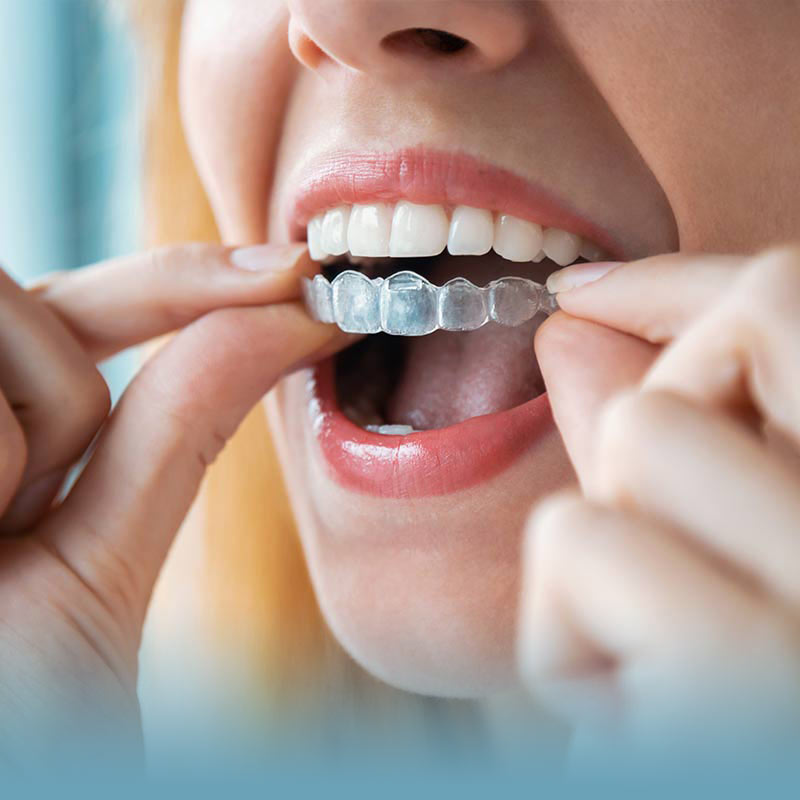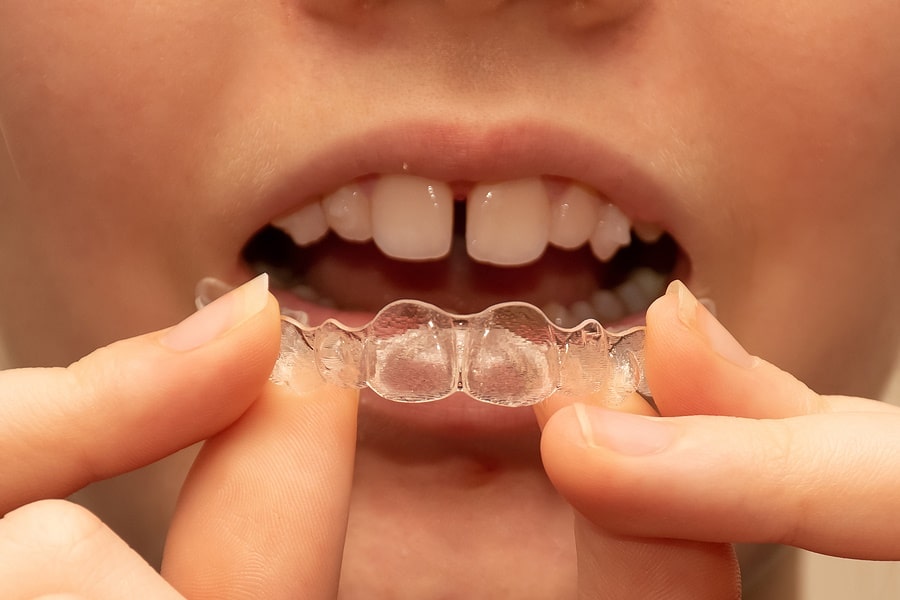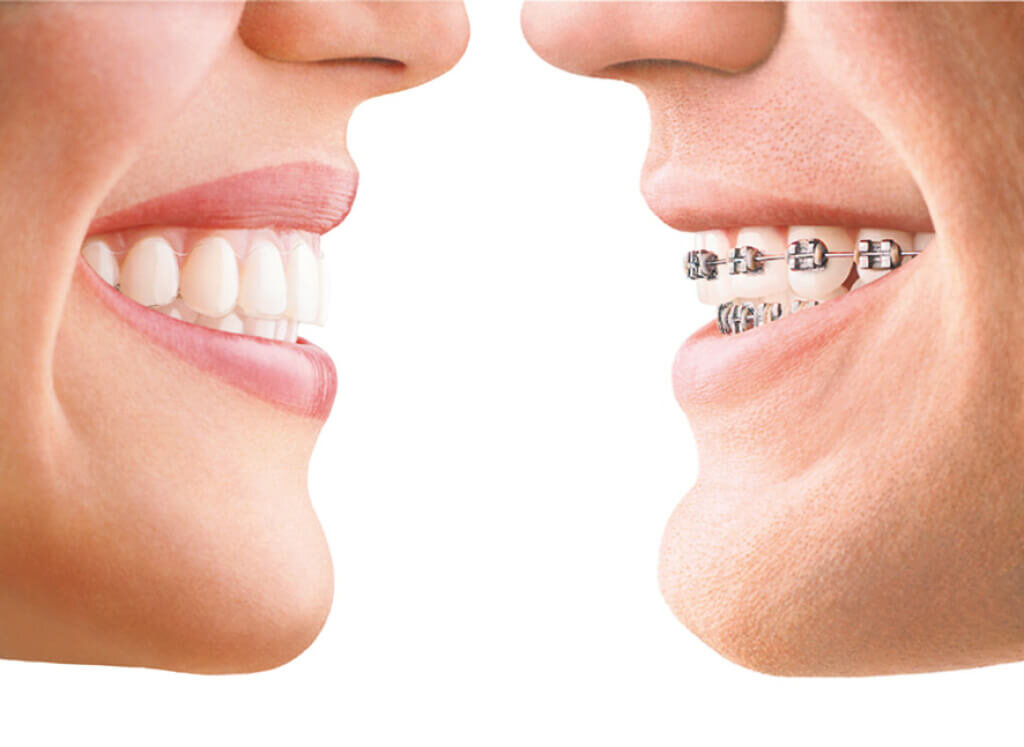The Price of Invisalign: Recognizing the Investment in Your Smile
The Price of Invisalign: Recognizing the Investment in Your Smile
Blog Article
Invisalign vs. Standard Dental braces: Which Choice Is Right for You?
When taking into consideration orthodontic therapy, the choice between Invisalign and conventional braces presents several essential elements that warrant cautious assessment. Invisalign provides a very discreet choice with removable aligners, while typical dental braces give an extra visible yet efficient remedy for extreme misalignment.
Introduction of Therapy Options

In contrast, traditional braces are composed of metal brackets and cables that are adhered to the teeth. This method uses continual pressure gradually to attain placement. While reliable for complex orthodontic concerns, conventional dental braces need normal visits for adjustments and can posture challenges in maintaining dental health as a result of the trouble of cleansing about cords and braces.
Both choices have their advantages, and the choice commonly pivots on certain dental problems, way of living choices, and client conformity. Eventually, seeking advice from an orthodontic expert is critical for figuring out one of the most appropriate therapy strategy tailored to individual requirements. Comprehending the nuances of each option can dramatically affect the general success of orthodontic therapy.
Aesthetic Considerations
A substantial aspect influencing the choice in between Invisalign and typical dental braces is the aesthetic appeal each therapy offers. Invisalign aligners are crafted from clear plastic, making them essentially invisible when used.
In comparison, typical braces are composed of metal brackets and cables, which can be extra recognizable. While improvements in orthodontic innovation have actually led to the development of smaller brackets and colored elastics, traditional braces still keep an even more noticeable profile. For some individuals, the presence of dental braces may hinder them from looking for needed therapy.
Ultimately, the selection in between Invisalign and typical dental braces might depend upon personal preferences relating to appearances. People who focus on discernment usually favor Invisalign, while those who are much less concerned regarding visibility might go with typical dental braces. Understanding the aesthetic effects of each choice is essential for making an educated decision that lines up with one's lifestyle and choices.
Comfort and Convenience

In regards to comfort, Invisalign aligners are detachable, making it possible for patients to appreciate their favorite foods without limitation and keep optimal oral health. Brushing and flossing are streamlined, as the aligners can be taken out during these regimens, whereas typical his comment is here dental braces call for careful maneuvering around cords and braces.
In comparison, conventional braces necessitate routine modifications, making them much less hassle-free for those with hectic schedules. On the whole, the comfort and ease of Visit Your URL Invisalign make it an appealing choice for several individuals looking for orthodontic therapy.
Therapy Duration and Effectiveness
While both Invisalign and typical dental braces are efficient in dealing with oral imbalances, the period of treatment can vary considerably in between the two alternatives. Typically, Invisalign treatment can take anywhere from 12 to 18 months, depending on the intricacy of the situation. The clear aligners work by progressively moving teeth right into their preferred positions, and normal follow-ups with an orthodontist aid make sure development continues to be on course.
On the other hand, traditional braces often require a longer dedication, usually ranging from 18 months to 3 years. This is due to their set nature and making use of cords and braces, which can be a lot more efficient for intricate cases and serious misalignments (Invisalign). The therapy efficiency of typical braces is well-documented, as they enable exact adjustments and better control over tooth motion
Inevitably, the selection in between Invisalign and standard braces might rest on both the awaited therapy duration and the certain dental issues at hand. Consulting with an orthodontist is vital, as they can provide tailored suggestions based upon private requirements, guaranteeing the chosen method lines up with preferred timeframes and outcomes.
Price Comparison and Insurance Policy Options
Price plays a considerable duty in the decision-making procedure for individuals taking into consideration orthodontic therapy, whether selecting Invisalign or standard braces. Usually, the cost of Invisalign varieties from $3,000 to $8,000, while typical dental braces typically set you back in between $2,000 and $6,000. Aspects affecting these expenses consist of the intricacy of the case, the period of therapy, and geographical area.
Insurance insurance coverage can substantially influence out-of-pocket expenses. Many oral insurance policy plans give partial insurance coverage for orthodontic treatments, however the specifics can differ commonly. It is critical for people to assess their insurance plan to establish the degree of protection for either alternative. Usually, typical dental braces might be much more frequently covered by insurance policy strategies compared to Invisalign, which some insurance companies categorize as an aesthetic procedure.
Furthermore, a number of orthodontic methods supply adaptable layaway plan, making both treatment alternatives extra available. People should ask about potential funding choices and discounts for ahead Check This Out of time payments. Examining the overall expense, consisting of insurance benefits and layaway plan, is necessary for making a notified decision that lines up with both aesthetic choices and spending plan considerations.

Conclusion
In summary, the choice between Invisalign and traditional dental braces depends upon numerous factors, including aesthetic preferences, comfort, treatment duration, and expense. Invisalign offers a discreet, detachable choice that facilitates dental health and dietary flexibility, while conventional dental braces might be a lot more ideal for complicated dental issues and often come at a lower cost factor. Inevitably, appointment with an orthodontist is crucial to analyze specific conditions and establish the most appropriate treatment alternative for achieving optimum dental placement.
When thinking about orthodontic therapy, the option between Invisalign and standard braces provides numerous vital elements that merit mindful assessment.Contrasting Invisalign and conventional braces discloses distinctive therapy options for orthodontic improvement.While both Invisalign and conventional dental braces are efficient in dealing with oral imbalances, the duration of therapy can vary dramatically between the two options.Price plays a substantial function in the decision-making procedure for people thinking about orthodontic treatment, whether deciding for Invisalign or typical dental braces.In recap, the option between Invisalign and standard braces hinges on multiple elements, consisting of visual choices, comfort, treatment period, and price.
Report this page